South West Africa
South West Africa, known today as Namibia, occupies a vast stretch of desert and coastline along Africa’s southwestern edge. Its postal history is deeply entwined with colonial conquest, international mandates, and the long road to independence. Originally part of German South West Africa, the region came under German colonial rule in the 1880s, and Germany issued stamps for the colony starting in 1897—typically German imperial stamps overprinted with “Deutsch-Südwestafrika”.
Following Germany’s defeat in World War I, the territory was placed under South African administration by a League of Nations mandate in 1920. South African stamps were initially used, overprinted with “S.W.A.” for South West Africa. In 1923, South West Africa began issuing its own definitive stamps—bilingual in English and Afrikaans—typically inscribed “South West Africa / Suidwes Afrika”. These often appeared in se-tenant pairs, with one half in English and the other in Afrikaans, making them particularly distinctive and collectible.
Throughout the 20th century, stamps of South West Africa featured local wildlife, native plants, indigenous cultural scenes, and colonial architecture—highlighting the land’s stark natural beauty and complex cultural identity. Issues from the 1930s to the 1970s reflected South Africa’s political control, including portraits of British monarchs and later South African state presidents, especially after South Africa became a republic in 1961.
Although the United Nations revoked South Africa’s mandate in 1966, South Africa continued to govern the territory and issue stamps under the name “South West Africa” until independence was achieved. The final stamps bearing the South West Africa name were issued in 1989, just before independence.
On 21 March 1990, the nation became Namibia, and the postal service adopted the new name, ushering in a fresh era of stamp design that celebrated independence, reconciliation, and national pride.
Stamps from the South West Africa era serve as a visual record of shifting colonial powers, language politics, and nationalist aspirations—capturing, in perforated form, the long and often turbulent history of a land shaped by occupation, resilience, and eventual freedom.
-
1917 SOUTH WEST AFRICA…TO GERMAN FORCES.. [23147]
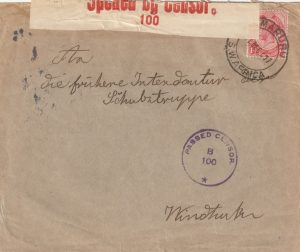 $65.00
Add to cart
More Info...
$65.00
Add to cart
More Info... -
1945 TRIESTE – NEW ZEALAND..CENSORED REGISTERED WW2.. [22872]
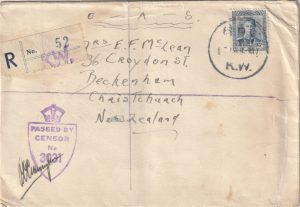 $125.00
Add to cart
More Info...
$125.00
Add to cart
More Info... -
1919 SOUTH WEST AFRICA – ABYSSINIA (ETHIOPIA)…REGISTERED, CENSORED & RETURNED.. [22566]
 $200.00
Add to cart
More Info...
$200.00
Add to cart
More Info... -
1917 SOUTH WEST AFRICA – GB..REGISTERED – OCUPATION OF KEETMANSHOOP .. [22528]
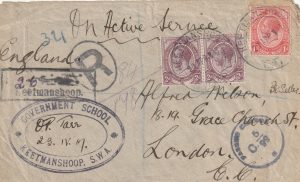 $300.00
Add to cart
More Info...
$300.00
Add to cart
More Info... -
1915 SOUTH WEST AFRICA – GB..SOUTH AFRICAN FORCES .. [22527]
 $350.00
Add to cart
More Info...
$350.00
Add to cart
More Info... -
1915 SOUTH AFRICA (BECHUANALAND)- GB..SOUTH AFRICAN FORCES .. [22526]
 $250.00
Add to cart
More Info...
$250.00
Add to cart
More Info... -
1915 SOUTH WEST AFRICA – GB..SOUTH AFRICAN FORCES .. [22525]
 $225.00
Add to cart
More Info...
$225.00
Add to cart
More Info... -
1915 SOUTH WEST AFRICA – GB..SOUTH AFRICAN FORCES & TAXED.. [22521]
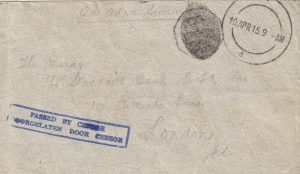 $125.00
Add to cart
More Info...
$125.00
Add to cart
More Info... -
1915 SOUTH WEST AFRICA – SOUTH AFRICA (TRANSVAAL) O.H.M.S. .. [22524]
 $150.00
Add to cart
More Info...
$150.00
Add to cart
More Info... -
1915 SOUTH WEST AFRICA – GB..SOUTH AFRICAN FORCES .. [22523]
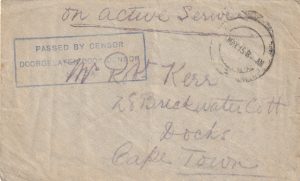 $100.00
Add to cart
More Info...
$100.00
Add to cart
More Info... -
1915 SOUTH WEST AFRICA – GB..SOUTH AFRICAN FORCES & TAXED.. [22522]
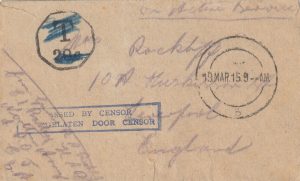 $75.00
Add to cart
More Info...
$75.00
Add to cart
More Info... -
1915 SOUTH WEST AFRICA…4th BRIGADE ENSLINS HORSE / HOSPITAL.. [22520]
 $575.00
Add to cart
More Info...
$575.00
Add to cart
More Info... -
1914 SOUTH AFRICA / S.W.A. – BOTWANA / BECHUANALAND [22517]
 $175.00
Add to cart
More Info...
$175.00
Add to cart
More Info... -
1915 SOUTH WEST AFRICA – GB….FORMER GERMAN COLONY.. [22515]
 $325.00
Add to cart
More Info...
$325.00
Add to cart
More Info... -
1916 SOUTH WEST AFRICA – GB..SOUTH AFRICAN MOUNTED POLICE.. [22514]
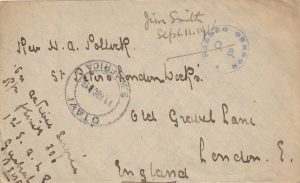 $175.00
Add to cart
More Info...
$175.00
Add to cart
More Info... -
1907 GERMAN SOUTH WEST AFRICA – GERMANY … HERERO WARS 1903 – 1907 … [19866]
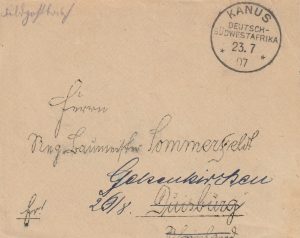 $150.00
Add to cart
More Info...
$150.00
Add to cart
More Info... -
1920 SOUTH WEST AFRICA – GB..AUSTRALIAN COMFORTS FUND.. [21844]
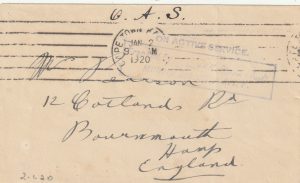 $275.00
Add to cart
More Info...
$275.00
Add to cart
More Info... -
1918 SOUTH AFRICA – SOUTH WEST AFRICA… C.O.G.H. REGISTERED [21207]
 $125.00
Add to cart
More Info...
$125.00
Add to cart
More Info... -
1945 SOUTH WEST AFRICA – USA…WW2 AIRMAIL to OPELIKA POW CAMP.. [21458]
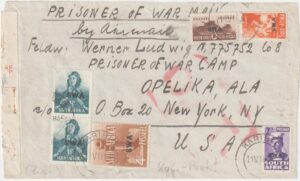 $125.00
Add to cart
More Info...
$125.00
Add to cart
More Info... -
1918 SOUTH WEST AFRICA …WW1 INTERNAL POW MAIL [18320]
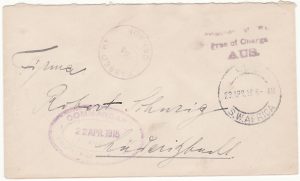 $150.00
Add to cart
More Info...
$150.00
Add to cart
More Info... -
1904 JAPAN – GERMAN SOUTH WEST AFRICA…HERERO WAR… [20367]
 $350.00
Add to cart
More Info...
$350.00
Add to cart
More Info... -
1916 SOUTH AFRICA – SOUTH WEST AFRICA..WW1 CENSORED… [20103]
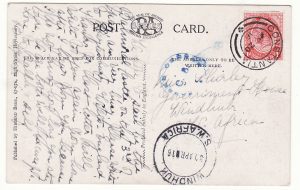 $50.00
Add to cart
More Info...
$50.00
Add to cart
More Info... -
1908 GERMAN SOUTH WEST AFRICA – GERMANY … HERERO WARS 1903 – 1907 … [19867]
 $80.00
Add to cart
More Info...
$80.00
Add to cart
More Info... -
1906 GERMAN SOUTH WEST AFRICA – GERMANY … HERERO WARS 1903 – 1907 … [19865]
 $130.00
Add to cart
More Info...
$130.00
Add to cart
More Info...

